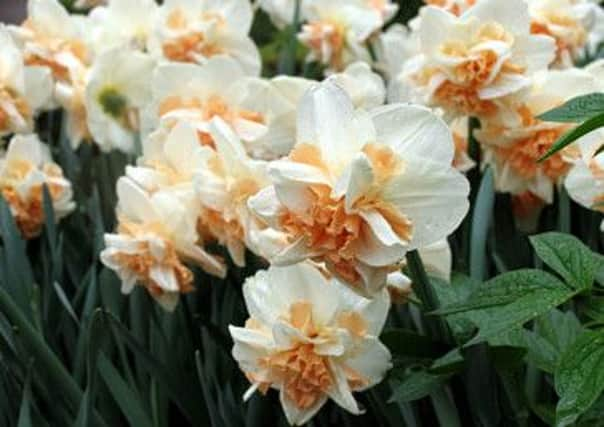Daffodils herald arrival of spring


Whether they be in the hedgerows and verges, or in your garden, they certainly help lift the colour tones of the countryside with their cheery yellow or white flowers.
The range of cheery colours and flower types that are available is beautiful; you have fully golden yellow blooms through to fully white, with all the variance of yellow petals with white trumpets and vice versa.
Advertisement
Hide AdAdvertisement
Hide AdYou have single flower varieties along with fully double varieties, one of my favourites being Narcissus “Delnashaugh” with its fully double frilly white and pink flowers, and yes pink.
It’s not just white and yellow they have to offer, there are nowadays some exclusive varieties with striking clear pink trumpets. But, as mentioned, they are new varieties and come at a bit of a premium price!
Scented varieties are also available, Narcissus “Thalia” produces masses of Persil white flowers on compact stems with a lovely sweet fragrance, so whether it be pink, white or yellow there’s a daffodil for you.
They are a great value for money plant, you plant them and without fail they come back year upon year and you’ll struggle to kill them. Now you might not kill them, but one thing you may struggle with is getting them to regularly flower, and that honestly comes mainly down to the feeding, and also the location.
Advertisement
Hide AdAdvertisement
Hide AdDaffodils like a sunny or partially shaded position, certainly not full shade. With the feeding it’s a simple case of either give them three liquid feeds with Tomorite now and carry out in four week intervals until the end of May, or a simpler option is using the Vitax Q4 pellets. Sprinkle them around each clump and the key nutrients will soak through, ensuring the bulb has the energy this summer when it is thinking about whether or not it plans to flower next season!
The confusing bit is that they flower freely in the wild, and no one is sprinkling fertiliser pellets around there? But mother nature is feeding them in her own special way. In the wild no-one clears away fallen leaves, or dead plant growth. It is left on the ground to break down, essentially composting the bulbs annually with fresh nutrients giving them all they need and resulting in great blooms!